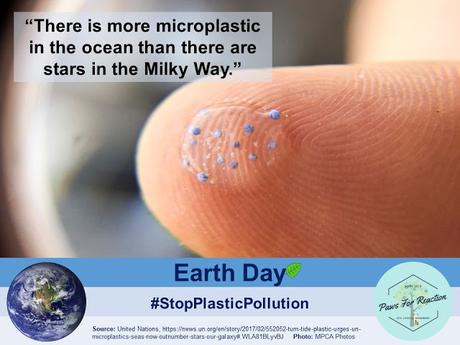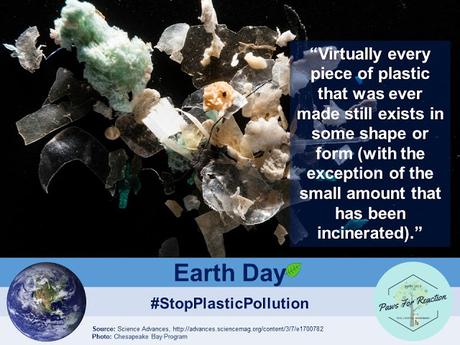By Stacey McIntyre-Gonzalez

Plastic pollution is a big problem, but the biggest problem when it comes to plastic pollution is the smallest plastic of all- microplastic.Microplastic may seem like a tiny issue that is easy to ignore, because they can be impossible to see unless under a microscope, but the truth is microplastic effects us in so many ways. Microplastic is a detriment to both the environment, climate change and our health and wellness.
First of all, what is microplastic? Plastics that are polluting our environment can break down into tiny pieces that can be impossible to see with the naked eye. These plastics break down for a number of reasons- water exposure, the sun and other elements can all play a role in the break down of these plastics. Because plastic pollution is such a large-scale problem, microplastic is everywhere. Microbeadsin bath products and cosmetics were a huge contributor to microplastic pollution until the world got wise to it and legislation started being passed in countries across the world to ban the use of microbeads. Microplastic is in drinking water, it is in the fish and seafood that we eat because those creatures ingest it, and it can even be found in salt! We eat it and drink it without even knowing it’s there. Microplastic is in our soil, in our waterways and oceans- it’s all around us, right under our noses.
Once a living organism ingests plastic and it enters the bloodstream it will never be processed out. Unfortunately, plastics are made using toxic chemicals that can have a serious impact on human health. According to Earth Day Network:
"Once a living organism ingests plastic and it enters the bloodstream it will never be processed out. Unfortunately, plastics are made using toxic chemicals that can have a serious impact on human health. Plastic pollution is not only damaging the health of our planet. After decades of producing trillions of oil-based plastic items, the discovered negative consequences to human health are startling. Many plastics contain phthalates (DEHP) and the chemical bisphenol-A (BPA), now recognized as a hazard to public health and the human body. Both chemicals are potentially harmful to human hormones and reproductive systems. When heated in the Microwave, as reported by Fox News, these chemicals can leach out into the food they contain. In fact, many correlations have been shown between levels of some of these chemicals, and an increased risk of the following health problems: Plastic Pollution and our Health, Chromosomal and reproductive system abnormalities, Impaired brain and neurological functions, Cancer, Cardiovascular system damage, Adult-onset diabetes, Early puberty Obesity and Resistance to chemotherapy.”

We can’t address the problem of plastic pollution without looking at plastic and the impact on the environment- and the impact that plastic has on climate change. Plastic pollution is a huge threat to wildlife. Wildlife- especially birds and marine creatures- are being suffocated by plastic. Deceased animals recovered on shorelines are being found with stomachs full of plastic.
The creation of plastic also pollutes with large amounts of greenhouse gasses. Since plastic is a petroleum product- created in a similar way as refined oil is created- plastic has a greater impact on climate than what most would expect. It is important that we connect not only plastic pollution, but the creation of plastic itself to climate change.
The next time you drink water or salt your food think about the microscopic plastic you could be ingesting. Let that thought energize you to take action. What can you do to reduce microplastic? Here are some tips from Earth Day Network:
• Prevent the creation of microplastics by being careful not to toss plastic products in water ways, beaches or open spaces.
• Look up products on the Internet and choose not to buy products containing microbeads. Choose products that have natural exfoliators instead.
• Consider changing the way you wash your clothing to reduce the number of microfibers that are released. There are also bags and other devices you can use in your washing machine to collect the fibers.• Consider purchasing items made of natural fibers, when possible.
• Do not wash off lint from your dryer down the drain. Dispose of it on the trash.
 Want to get involved with an organization fighting the good fight against microplastic? Check out Beat The Micro Bead! Happy Earth Day!
Want to get involved with an organization fighting the good fight against microplastic? Check out Beat The Micro Bead! Happy Earth Day!